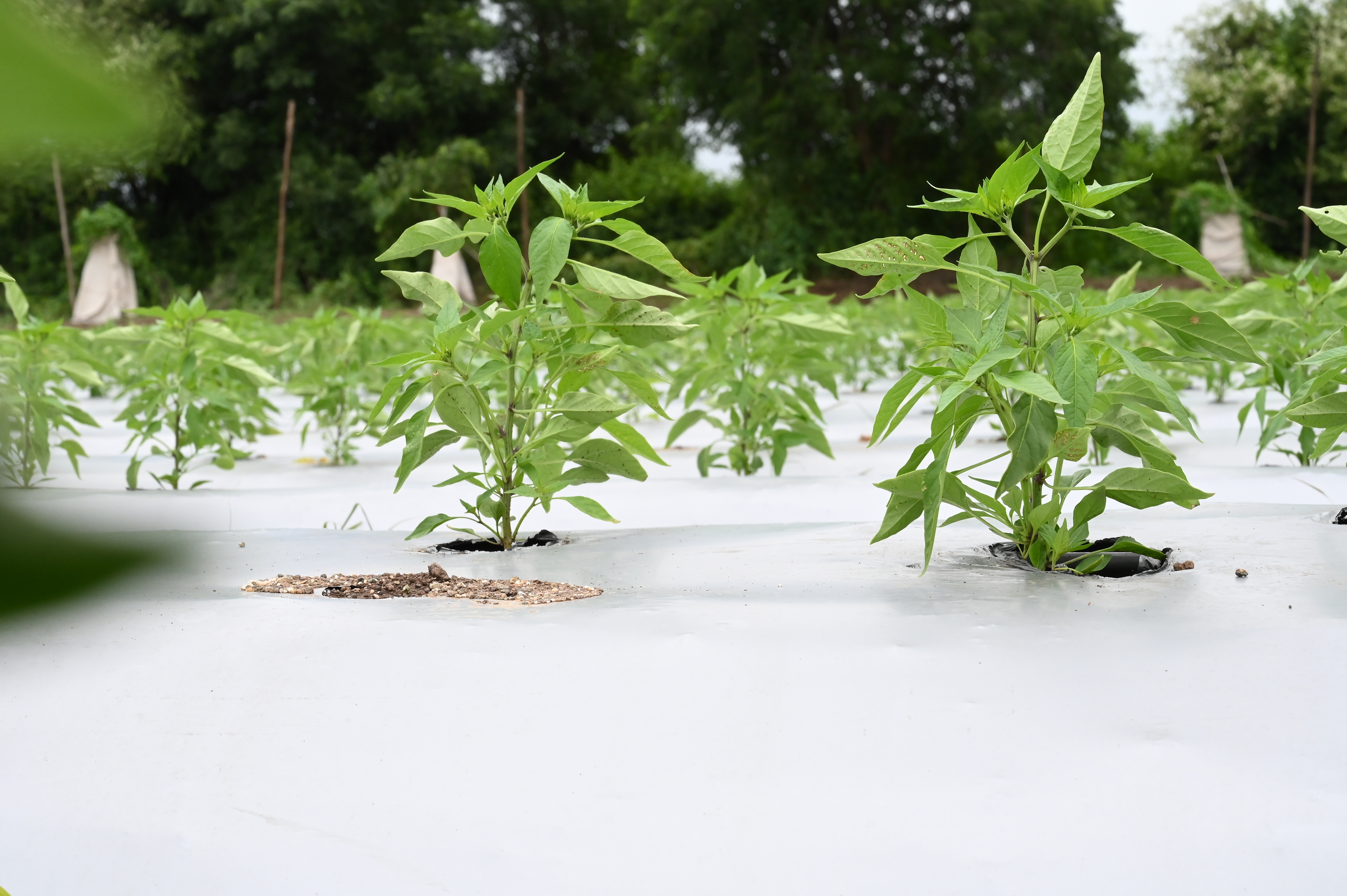- 16 Oct, 2024
- Gokul Plastic
-
Black Mulching Film: Blocks sunlight to prevent weed growth, while retaining soil moisture and temperature.
-
Silver-Black Mulching Film: Combines weed prevention with pest control, as the reflective surface deters insects.
-
Transparent Mulching Film: Enhances soil temperature for crops that require warmer conditions.
-
Biodegradable Mulching Film: Environmentally friendly option that decomposes naturally.
-
Moisture Conservation Mulching film minimizes water evaporation, helping farmers conserve water. This is particularly beneficial in arid regions where water scarcity is a significant challenge.
-
Weed Control By blocking sunlight, mulching films suppress the growth of weeds, reducing the need for manual labor or chemical herbicides.
-
Temperature Regulation The film helps maintain optimal soil temperature, promoting faster germination and healthier root development.
-
Enhanced Crop Quality Mulching film prevents direct contact between crops and soil, reducing the risk of contamination, pests, and diseases.
-
Increased Yield The controlled environment created by mulching films supports consistent growth and higher yields.
-
Pest Control Reflective mulching films deter insects, reducing the need for pesticides.
-
Vegetables such as tomatoes, cucumbers, and peppers
-
Fruits like strawberries and melons
-
Ornamental plants and flowers
-
Cash crops such as cotton
-
Soil Preparation: Till and level the soil to ensure proper contact with the film.
-
Film Placement: Lay the film over the soil, ensuring it’s stretched tightly to avoid air pockets.
-
Planting: Make small holes in the film to plant seeds or seedlings.
-
Maintenance: Regularly check for tears or damage and make necessary repairs.
What is Mulching Film? An In-depth Guide
Mulching film has become a cornerstone in modern agricultural practices, offering numerous benefits for farmers aiming to increase crop yield and quality. This innovative technique involves covering the soil with a thin plastic film, creating an ideal environment for plant growth. But what exactly is mulching film, and how does it transform agricultural processes? Let’s dive into the details.
Definition and Types of Mulching Film
Mulching film is a polyethylene sheet used to cover soil around plants to modify the local environment, conserve water, and reduce weed growth. It acts as a protective layer, providing a controlled setting for crops to thrive.
There are several types of mulching films based on their properties and applications:
Benefits of Using Mulching Film
Applications of Mulching Film
Mulching film is widely used in cultivating:
Installation Process
Using mulching film involves a few straightforward steps:
Environmental Considerations
While traditional plastic mulching films provide numerous benefits, they pose environmental challenges due to their non-biodegradable nature. Biodegradable options are increasingly being adopted to mitigate these concerns, offering a sustainable alternative without compromising effectiveness.
Conclusion
Mulching film is a game-changer in agriculture, enhancing productivity while conserving resources. By selecting the right type and following proper installation techniques, farmers can significantly improve crop quality and yield. As sustainable practices gain prominence, biodegradable mulching films promise to shape the future of agriculture. Whether you’re a seasoned farmer or a gardening enthusiast, integrating mulching film into your practice can be a step toward more efficient and eco-friendly farming.




